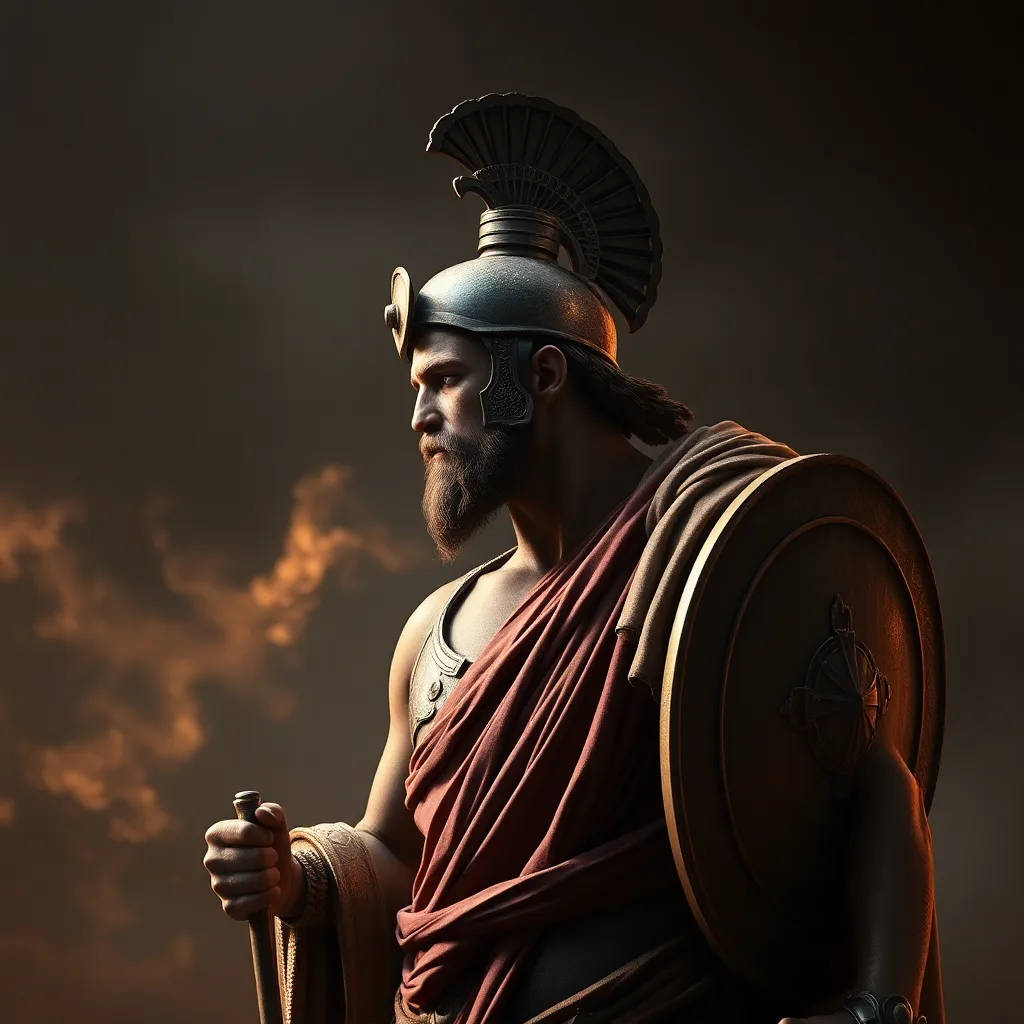The Duality of Achilles: Warrior and Human
I. Introduction
Achilles is one of the most iconic figures in Greek mythology, known not only for his unmatched skills in battle but also for his complex human emotions. As the central character of Homer’s epic poem, the Iliad, Achilles embodies the duality of being both a fierce warrior and a profoundly human individual. This article explores the complexities of Achilles’ character, highlighting how his experiences in the Trojan War reveal the intricate balance between heroism and humanity.
II. The Warrior Archetype
Achilles stands as the epitome of martial prowess in Greek mythology. His legendary status is rooted in his extraordinary abilities, which set him apart from other Greek heroes.
A. Achilles as the epitome of martial prowess
Renowned for his strength, speed, and combat skills, Achilles is often depicted as the ultimate warrior. His invincibility—except for his heel—symbolizes the ideal warrior who is both divine and human.
B. The significance of his role in the Trojan War
Achilles played a crucial role in the Trojan War, leading the Myrmidons and fighting fiercely against the Trojans. His participation was pivotal in the Greek victories, and his anger and withdrawal from battle had significant consequences for the Greek forces.
C. Examination of Achilles’ heroic qualities and their impact on Greek culture
Achilles embodies heroic qualities such as bravery, honor, and loyalty. These traits were celebrated in ancient Greek culture, influencing the values of heroism in literature and art.
III. The Human Side of Achilles
Beneath the surface of the formidable warrior lies a deeply human character marked by personal struggles, relationships, and emotional responses.
A. Personal struggles and vulnerabilities
Achilles is not devoid of weaknesses. His pride and rage lead to personal turmoil, showcasing his vulnerability despite his heroic stature.
B. Relationships with other characters
- Patroclus: His closest companion whose death profoundly impacts Achilles, prompting his return to battle.
- Agamemnon: Their conflict symbolizes Achilles’ struggle with authority and his sense of honor.
C. Emotional responses to loss and betrayal
Achilles’ journey is marked by profound grief and rage, particularly after the death of Patroclus. His emotional responses highlight his humanity, revealing how loss can drive individuals to seek revenge and confront their own mortality.
IV. The Conflict Between Duty and Desire
Achilles’ character arc is defined by the tension between his duty as a warrior and his personal desires, illustrating a classic human dilemma.
A. The choice between glory and a long life
Faced with the choice between eternal glory in battle and a long, unremarkable life, Achilles ultimately chooses the former. This decision reflects the Greek ideal of honor over longevity.
B. The internal struggle illustrated in Achilles’ character arc
Throughout the Iliad, Achilles grapples with his motivations, questioning the value of his choices. His internal conflict is a poignant representation of the human condition, where desires often clash with societal expectations.
C. Consequences of his decisions on his personal life and legacy
Achilles’ decisions lead to a tragic legacy marked by glory but also profound loss. His eventual realization of the cost of his choices adds depth to his character, making him a relatable figure despite his superhuman status.
V. The Role of Fate and Destiny
Fate plays a significant role in Achilles’ life, shaping his actions and experiences.
A. Exploration of fate in Achilles’ life
The concept of fate is central in Greek mythology, and Achilles is no exception. From his birth, it is foretold that he will either lead a short life filled with glory or a long, uneventful existence.
B. The tension between predestined outcomes and individual agency
Achilles’ awareness of his fate creates a tension between his actions and the inevitability of destiny. This struggle mirrors the human experience of grappling with life’s uncertainties.
C. Achilles’ acceptance of his fate as a reflection of human experience
Ultimately, Achilles accepts his fate, acknowledging that his actions lead to a legacy that transcends his mortal life. This acceptance reflects a profound understanding of the human experience, where individuals must come to terms with their destinies.
VI. The Legacy of Achilles: A Symbol of Duality
Achilles’ story resonates across centuries, symbolizing the dual nature of heroism and humanity.
A. How Achilles’ story resonates through literature and art
The themes of Achilles’ character have influenced numerous works of literature and art, from ancient times to modern interpretations. His legacy continues to inspire writers and artists, embodying the complexities of the human experience.
B. The continued relevance of his character in modern narratives
Today, Achilles represents the struggle between personal desires and societal expectations, making him a relevant figure in contemporary discussions about heroism and identity.
C. The duality of heroism and humanity in contemporary discussions
The exploration of Achilles’ character invites discussions about what it means to be a hero in a flawed world, prompting reflections on our own dualities as individuals.
VII. Conclusion
Achilles embodies the duality of being a warrior and a human, navigating the complexities of honor, loss, and fate. His journey teaches us about the intricacies of the human condition, illustrating that even the greatest heroes are not immune to vulnerability and emotional struggles.
The legacy of Achilles continues to endure, reminding us that the qualities that define heroism are often intertwined with the very human experiences of love, loss, and the quest for meaning.
VIII. References
A. List of primary sources
- Homer’s Iliad
B. Secondary sources exploring the themes of duality in Achilles’ character
- Books and articles analyzing the Iliad and its characters
C. Suggested readings for further exploration of Greek mythology and heroism
- The Hero with a Thousand Faces by Joseph Campbell
- Mythology by Edith Hamilton




